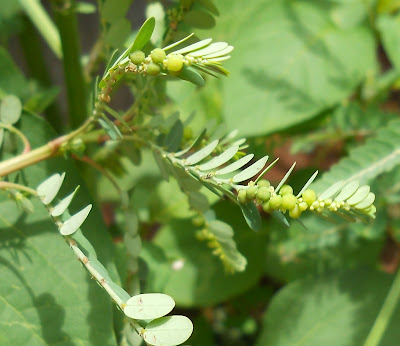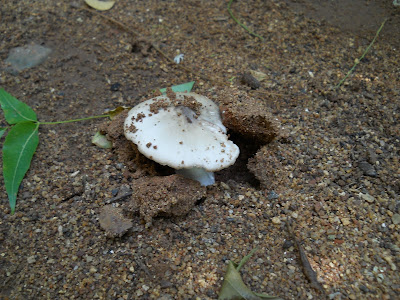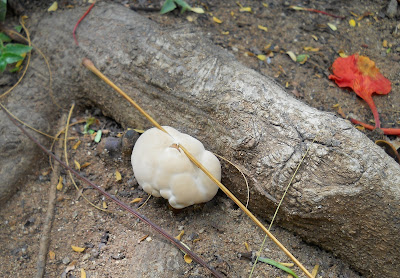While most of India has been hit by the South west Monsoons, Tamil Nadu as usual, has picked up only some of this rain. To get our fair share of downpour, we will have to wait till the end of the year, for the North east monsoons. Maximum temperatures are still in the 33 deg C - 36 deg C range. However, even the occasional light showers that we've been getting are a blessing. The layers of dust on the trees have been washed off, the smaller plants aren't wilting any more, the city seems greener and everyone is more cheerful.
 |
| Lush View from the Western Side of Our Roof |
 |
| Rain has Goaded the Lantana to Bloom |
With each brief spell of rain, there are a few new appearances in the garden.
A recent appearance is the Keezha Nelli or Phyllanthus niruri. In Tamil, "Keezha" means down/under and "nelli" means berry. Under the leaves of this plant, you will find tiny green mustard seed-sized fruits. It is this feature that helps me distinguish it from other similar looking weeds. Though in Ayurveda, it is regarded highly, it is in reality an unassuming weed that chooses to spring up anyplace. As a child, I remember my mother telling me about its anti-jaundice properties. It also has several other medical benefits, including kidney stone prevention. With several trials underway, allopaths are seriously looking at its potential.
 |
| Phyllanthus Niruri or Keezha Nelli (in Tamil) |
 |
| Tiny fruit on the Leaf Underside |
Mushrooms have also been sprouting in parts of our garden.
 |
| Pushing Through the Dirt |
 |
| A Fine Umbrella for Some Bug? |
Like most Indians, I haven't a clue about which mushrooms are edible and which aren't. It's hard enough for an expert. Traditionally labelled as "
tamasic", since it springs out of rotting and decaying matter, mushrooms haven't enjoyed a favourable reputation in India. We are beginning to change that as we discover the joys of eating them. Yet, the more orthodox among us, still like to keep away from these fungi.
 |
| Mushroom with a Reed Fused into it. |
While mushroom cultivation requires a tightly controlled environment, I like the way these wild mushrooms choose to sprout anywhere with gay abandon. If only I could eat them!



